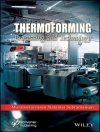Presenting comprehensively the emerging field of MIMs and MIMats — a must read for everyone who is working on this topic.
Das E-Book Mechanically Interlocked Materials wird angeboten von Wiley-VCH Gmb H und wurde mit folgenden Begriffen kategorisiert:
Biopolymere, Biopolymers, Chemie, Chemistry, Electronic Materials, Elektronische Materialien, Materials Science, Materialwissenschaften, Polymer Science & Technology, Polymerwissenschaft u. -technologie, Sensor Materials, Sensoren, Supramolecular Chemistry, Supramolekulare Chemie
Содержание
1. Force Promoted Transformations in Mechanically Linked Molecules
2. Mechanically Interlocked Materials. Polymers, Nanomaterials, MOFs and more
Colloidal Nanomaterials with Mechanically Interlocked Parts
3. Mechanically Interlocked Nanotubes
4. Molecular Motors on Surfaces
5. MIMs in MOFs: Designing Mechanically Interlocked
Molecules to Function inside Metal-Organic Frameworks
6. Mechanically Interlocked Proteins
7. Recent Advances on Catenanes and Rotaxanes Made of DNA
8. Oligo- and Poly-Catenanes from Molecular and Supramolecular Building Blocks
9. Synthesis, properties, and Applications of Mechanically Interlocked Polymers
Об авторе
Emilio M. Pérez received his BSc and MSc from the Universidad de Salamanca (2001) and his Ph D from the University of Edinburgh (2005), supervised by Prof. David A. Leigh. After a Juan de la Cierva postdoctoral fellowship with Prof. Nazario Martín at Universidad Complutense de Madrid, he joined IMDEA Nanociencia as Ramón y Cajal Researcher in 2011. In 2013 he was promoted to Senior Research Professor, and since 2015 he is Executive Director for Scientific Outreach. His research interests are focused in three areas: development of new methods for chemical modification of carbon nanotubes, covalent and noncovalent chemistry of 2D materials, and fundamental aspects of supramolecular chemistry. He has received European Research Council Starting and Proof-of-Concept grants, and is a member of the Young Academy of Europe and of the Editorial Advisory Board of Fullerenes, Nanotubes and Carbon Nanostructures, (Tailor & Francis), among other distinctions.












